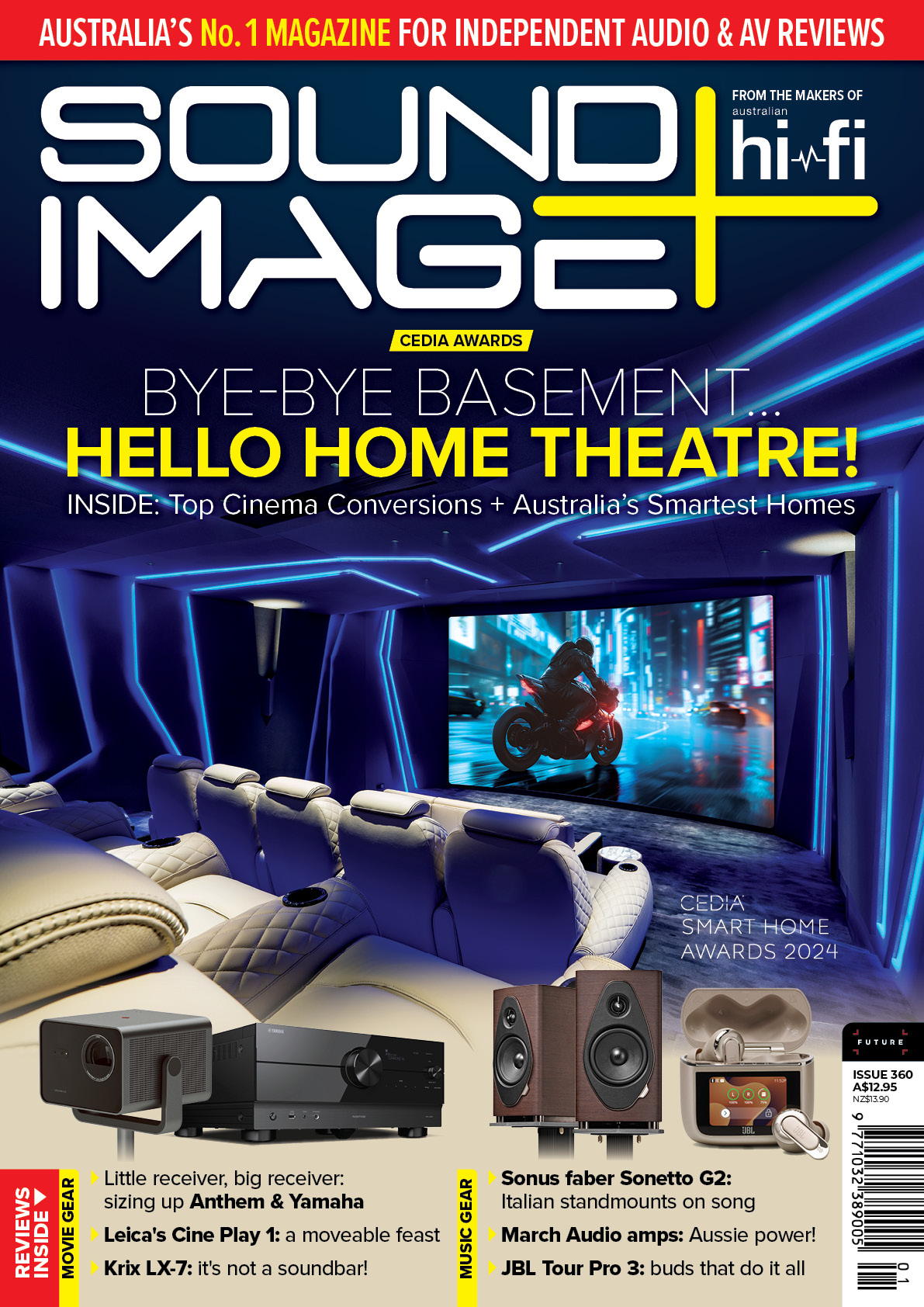Australian brand Elementi aims to reinvent home theatre with its new Fire speakers
External amplifiers and other tidy tricks
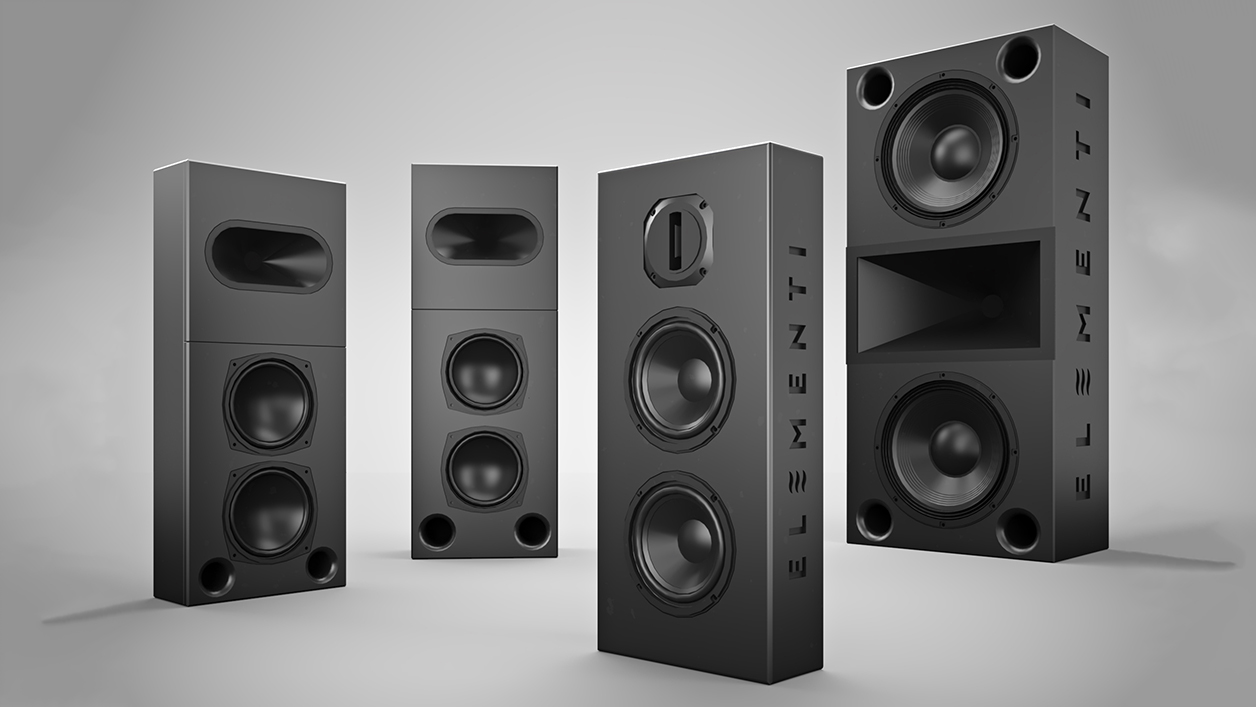
It’s rare to encounter a new brand which not only brings fresh and competitive product to the marketplace, but which also suggests a way of doing things differently. But that’s the fundamental ethos behind Elementi, a new Australian home-cinema audio brand.
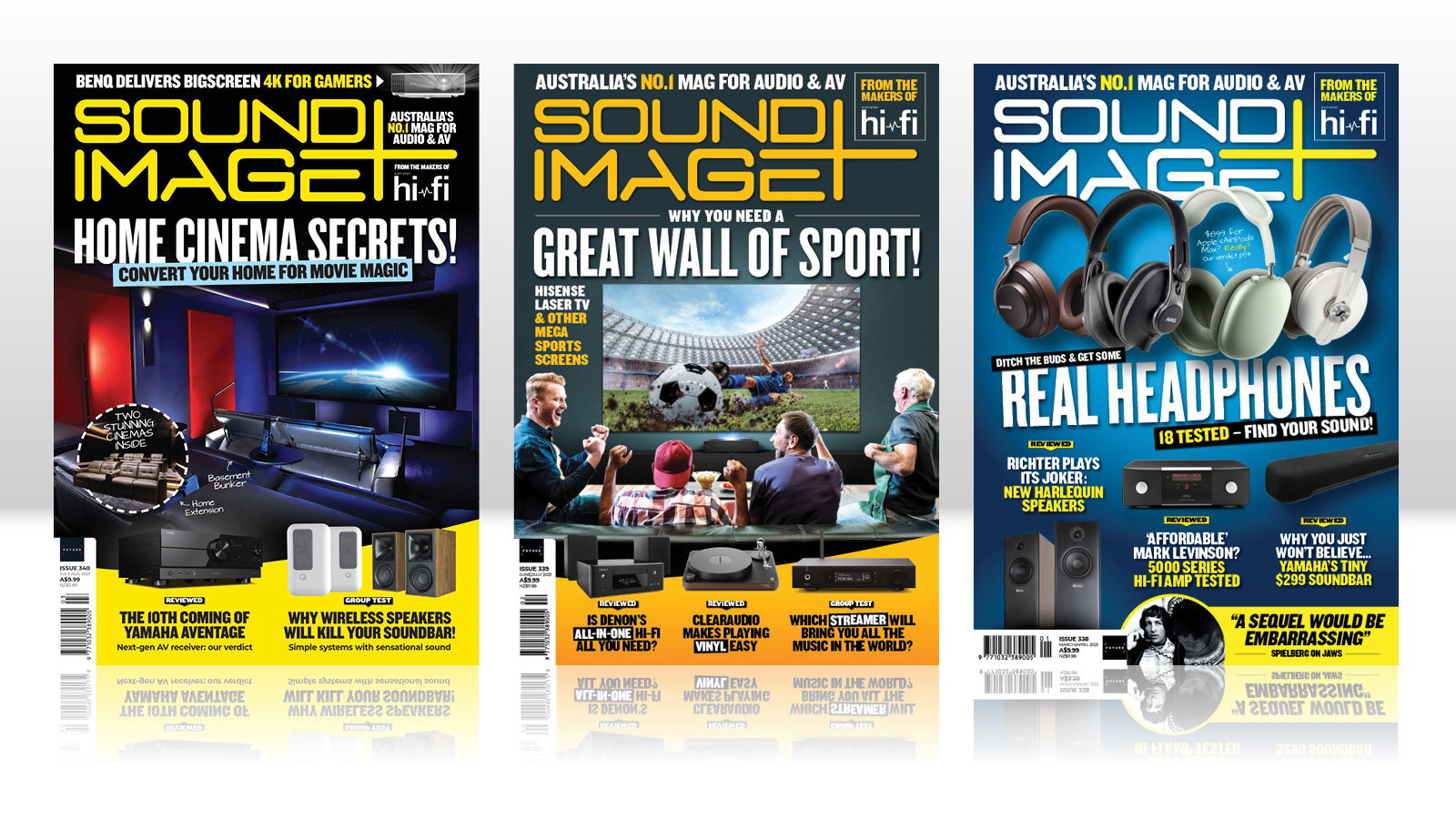
This feature originally appeared in Sound+Image magazine, one of What Hi-Fi?’s Australian sister publications. Click here for more information on Sound+Image, including digital editions and details on how you can subscribe.
Designed specifically for home theatre use (though the largest of them could potentially service commercial applications), the Elementi line up includes Fire (pictured above) and Air speaker ranges, plus an Earth range of subwoofers, and an upcoming Water range of Atmos speakers.
The Fire range uses compression drivers for high frequency delivery, while the Air models share the cabinet and mid-bass drivers from the Fire range but switch to a pleated diaphragm tweeter along the lines of Oskar Hail’s air motion transformer.
Moving the amplifiers
Although the Elementi speakers are described as digital active, the amplification is not internal; the amplifier components are kept separate but adjacent to the speakers they individually power. So aside from the merits of each individual speaker design, Elementi brings a significant shift in equipment layout in a home cinema, by removing the power amplification from the main equipment rack.
This delivers the usual active speaker advantage of avoiding the need to run long speaker cables, where electrical properties can significantly change over the longer runs required around a cinema and potentially through walls.
Elementi notes that ideally speakers should be located within three metres of their amplifier. In the home cinema pictured opposite and overleaf on these pages, they have been mounted immediately adjacent.
The amps are relatively shallow and modular units, designed to mount vertically against the cinema walls, hidden behind fabric or in joinery. Audio signals can then be run over balanced analogue audio cables, or kept digital (via Dante audio-over-IP) right through to the Elementi amplifiers, with their floating 32-point DSP processing, digital crossovers, FIR filters (with correction in both the frequency and time domains), and high quality digital-to-analogue converters.
Get the What Hi-Fi? Newsletter
The latest hi-fi, home cinema and tech news, reviews, buying advice and deals, direct to your inbox.
Another advantage of active speaker designs applies here, where the combined design allows the amplification to be matched specifically to the speakers, and vice versa. The power modules within the Elementi amplifiers are full-bandwidth PWM modulation Class-D from Danish company Pascal, whose modules have gained a reputation for both reliability and high-level sonic performance.
Elementi’s 500W and 1000W amplifier models feature passive cooling which ensures they are silent in the cinema. The 2200W active models feature ultra-silent fans and suit front wall placement to run Elementi Audio’s most powerful speakers and subwoofers.
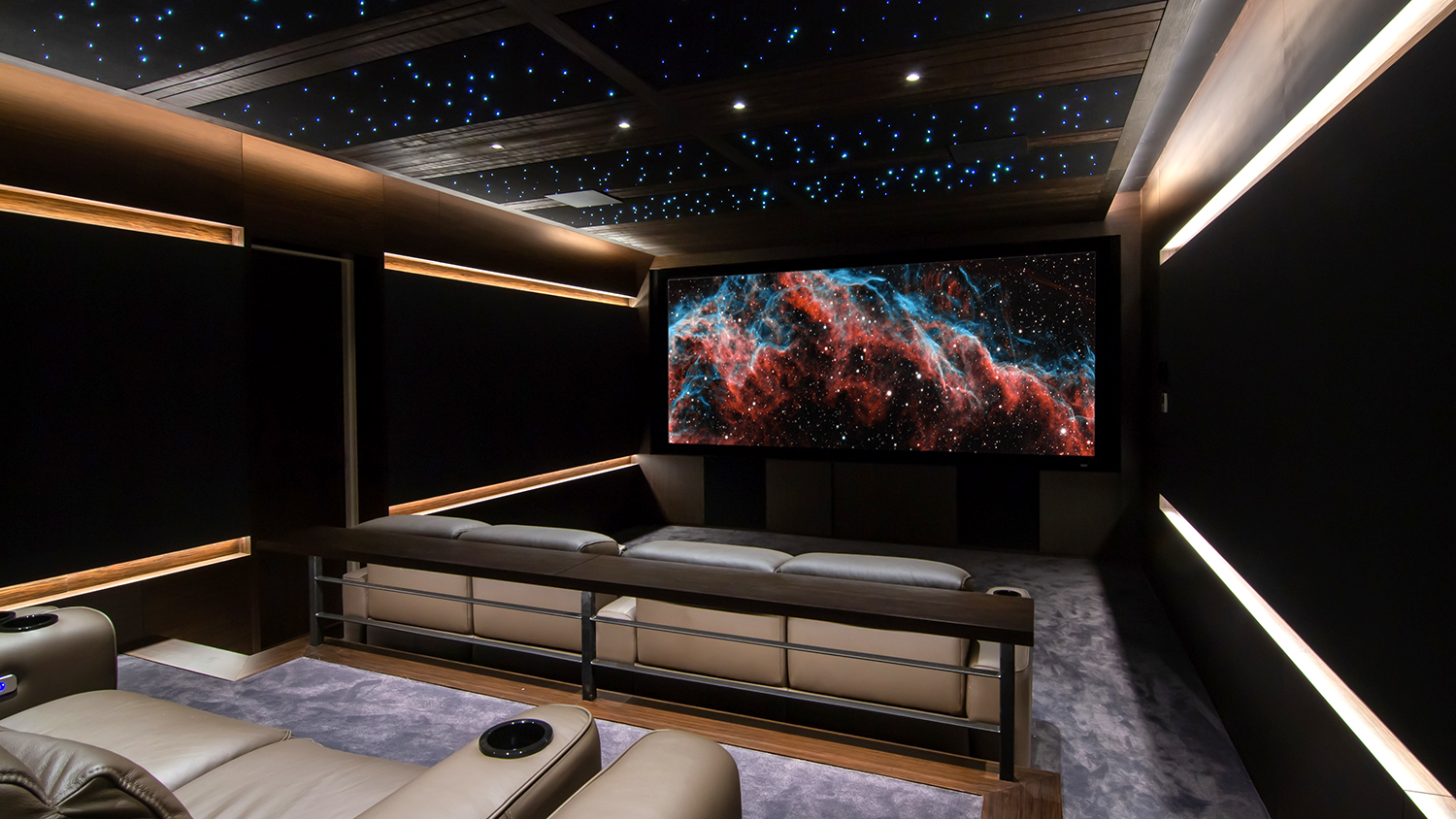
Dual advantages
The concept of having individual amplifiers positioned adjacent to the Elementi speakers they power is a significant change from the usual approach in a home cinema. More commonly, passive speakers around the room will be powered by one or several multi-channel power amplifiers that are housed in an equipment rack, along with the rest of the electronics.
Aside from this arrangement requiring long runs of speaker cable from the rack – which may be at the back of the room or even outside it – there is the further difficulty of keeping the rack adequately ventilated to prevent the build-up of heat.
Running too hot has a long-term impact on the longevity of equipment; in the shorter term it can even lead to equipment failure. By removing the power amplifiers from the rack – often a fair portion of what a rack might be – you get the twin advantages of reducing the size of the central rack, and of greatly reducing the level of heat it will generate.
Some home cinema designs avoid the disadvantages of long speaker runs by using active loudspeakers which have the amplification built into the loudspeaker enclosures themselves. Here the Elementi solution of separately wall-mounting amplifiers has another benefit, that of ease of servicing.
ELEMENTI FIREFLY
Configuration: Digital active 2-way with 2-channel 500W external amplifier
Suits: front LCR or surround
Drivers: 25mm compression driver (120°/40° waveguide); dual 6-inch drivers with ferrite magnets
Dimensions (hwd): 585 x 260 x 130mm
ELEMENTI FIREBIRD
Configuration: Digital active 2-way with 2-channel 500W or 1000W external amplifier
Suits: front LCR or surround
Drivers: 25mm compression driver (90°/40°dispersion waveguide); dual 6-inch drivers with neodymium magnets
Dimensions (hwd): 662 x 270 x 120mm
ELEMENTI PHOENIX
Configuration: Digital active 2-way with 2-channel 500W or 1000W external amplifier
Suits: front LCR or surround
Drivers: 25mm compression driver (90°/40°dispersion waveguide); dual 6-inch drivers with neodymium magnets
Dimensions (hwd): 730 x 270 x 150mm
ELEMENTI FIRE-DRAGON
Configuration: Digital active 3-way with 3-channel 2200W external amplifier
Suits: front LCR
Drivers: 44mm + 3.5-inch compression drivers (90°/40° dispersion waveguide; dual 12-inch drivers with neodymium magnets
Dimensions (hwd): 1009 x 450 x 280mm
If a digital active speaker design with the amplifier in the back of the speaker is custom-installed behind a screen, typically this would be installed from the front. But maintenance then becomes a labour-intensive process. If such a speaker fails, you’ve got to take the whole screen out, and then take the speaker out to get to the amplifier to work out the problem.
An Elementi amplifier, on the other hand, can mount near the speakers, potentially under the screen where a panel can be easily removed for access so you can identify any issue – is it working, is it on? You can unscrew it easily if removal is required.
The Elementi amplifiers are quite shallow, requiring only around 150mm in depth, including cables. A frame at the front of the room could accommodate amplifiers for the front speakers; the common implementation of an acoustically-transparent curtain at the rear of a theatre could have enough space to fit not only the usual speakers behind but their amplifiers as well.
The core philosophy, then, is that the amplifier component of Elementi digital active speakers can be positioned to serve up the best possible end result, whether that be thermally, or delivering a clean electrical signal to the speaker. And with the amplifiers being modular and so easily expandable, they can deliver the power required for the speakers based on the SPL requirements of the project.
For the home cinema designer this means changes in some of the usual ways of wiring a cinema, and indeed rethinking the whole system in quite a different way, especially if taking advantage of the Elementi’s ability to take their input digitally from the Dante audio-over-IP system.
While agreeing this is a conceptual change, Elementi points to the significant advantages both in terms of the signal path – eliminating potential digital-to-analogue and back to digital conversions – and in terms of cost savings on cables. By using Dante, installers are then just wiring up standard data cabling, with far easier and quicker cable terminations than required for more expensive analogue balanced cables.
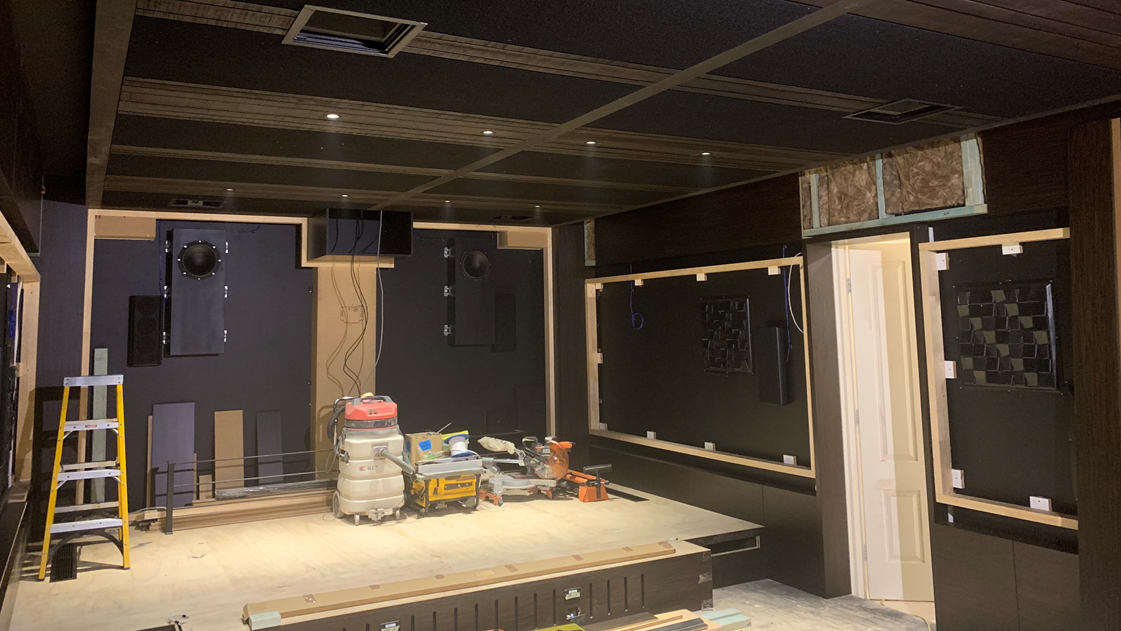
Speakers with a purpose
Elementi explains that the speakers themselves are also different, partly because of how they have been designed for precise purposes within a home cinema. The Firefly, for example (second from the right in the group image) has an unusual waveguide with 120° horizontal dispersion and 40° degree vertical, and comes as standard with a bracket that can angle the speaker at 20° to the wall.
The effect is that the speaker’s output tracks from the wall and outward to 120 degrees, this wide coverage being ideal for front wide or surround channels. Being less of a point source, this delivery of sound also allows seating closer to the speaker than might otherwise be advised.
Yet the Firefly is nevertheless a high output design, which can be used as a front LCR, where its very wide horizontal dispersion will assist a seamless integration between the three front speakers, even for a big screen. When using speakers with more narrow dispersion behind a large screen, five speakers across the front might be required for a uniform sound field.
Topping the Fire range is the Fire-Dragon, which Elementi claims can hit reference levels at 25 metres, making it suited to rooms of any size, even in commercial cinema design.
Another full-on design is the Kola subwoofer, named after the deepest hole ever yet drilled into the Earth. This sub can feature either single or dual 24-inch drivers, delivering from 10 to 100Hz under 2200W of power.
Indeed the names used across the Elementi range are great fun. In addition to the subsonic Kola, the Elementi Earth subwoofer range has models called Obsidian, Onyx and Basalt. The Water range of Atmos speakers will have Maelstrom and Tsunami models. The linear-phase Air models rise from the Zephyr through the Sirocco to the Tempest. And the Elementi Fire range, with its compression drivers, has the Firefly, the Firebird, Phoenix and the range-topping FireDragon.
While those compression drivers, as used in the Fire range, are not unusual in home cinema use, Elementi notes that the processing in the dedicated Elementi amplifiers makes a difference, taking the best of what compression drivers have to offer – their dynamic and detailed sound – but taming any potential harshness by using FIR filters which tune not only frequency but also phase. By tuning the speakers accurately in the laboratory, Elementi aims to deliver a speaker that sounds powerful, clean, warm and effortless.
Using digital crossovers prior to the amplification also ensures that if the bass drivers are being pushed hard, that strain does not show up in the tweeters to affect the quality of detail in the sound.
Right thinking, right timing
So while Elementi requires a rethink in some of the fundamentals of a home cinema, that’s exactly the company’s point – this is a new style of system, putting amplifiers in a beneficial position, delivering the best possible sound, removing issues of phase and heat, and potentially reducing cable costs significantly.
Yet Elementi says that what will sell the system is its sound – extraordinarily powerful, immersively rich, yet clean.
Sound+Image is Australia's no.1 mag for audio & AV – sister magazine to Australian Hi-Fi and to the UK's What Hi-Fi?, and bestower of the annual Sound+Image Awards, which since 1989 have recognised the year's best hi-fi and home cinema products and installations. While Sound+Image lives here online as part of our group, our true nature is best revealed in the print magazines and digital issues, which curate unique collections of content each issue under the Editorship of Jez Ford, in a celebration of the joys that real hi-fi and high-quality AV can bring. Enjoy essential reviews of the most exciting new gear, features on Australia's best home cinemas, advice on how to find your sound, and our full Buying Guide based on all our current and past award-winners, all wrapped up with the latest news and editorial ponderings. Click here for more information about Sound+Image, including links to buy individual digital editions and details on how best to subscribe.
